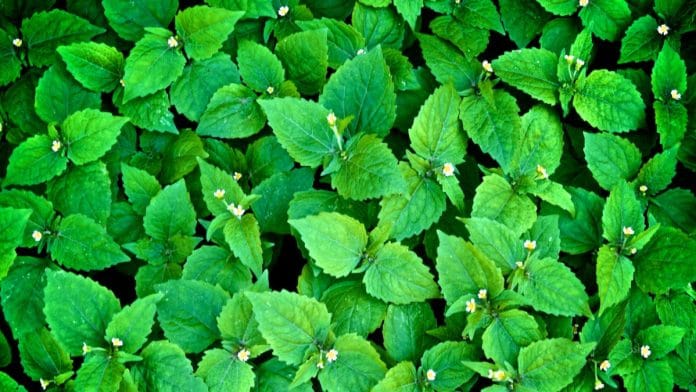Thank you dear subscribers, we are overwhelmed with your response.
Your Turn is a unique section from ThePrint featuring points of view from its subscribers. If you are a subscriber, have a point of view, please send it to us. If not, do subscribe here: https://englishdev.theprint.in/subscribe/
In 2022, Bhagwant Mann addressed the critical need for the Homi Bhabha Cancer Hospital in Mohali, Punjab, post the advent of Green Revolution that began in the 1960s.
Before this agricultural transformation and paradigm shift in the agrarian scenario, India was portrayed as functioning on the mercy of US food exports, often depicted as reaching out with a begging bowl” as Indira Gandhi once put it. To combat this perception, India initiated the Green Revolution, which bolstered the food production and agricultural productivity, thereby reducing hunger and famine significantly, leaving us with a gutsy feeling of “happily ever after.”
But, decades post-revolution, Punjab started grappling with issues such as deteriorating soil health, pest-infested crops, and overexploitation of groundwater, leading to catastrophic consequences. This revolution came at the harrowing cost of human lives and health, scarring families for generations, including but not limited to cancer, renal failure, birth defects, and stillborn babies.
Punjab is often touted as the Green Revolution’s most celebrated success story.
Punjab, a semi-arid region, embraced rice cultivation despite it being a highly water-intensive crop. Growing 1 kg of rice requires a staggering 5,337 litres of water. Yet, Punjab was handpicked to carry out this revolutionary project. Irrigation water was made available from major dam and canal systems, and as these were fully appropriated, it slowly gave rise to an era of unprecedented pumping of groundwater fueled by free and subsidized electricity for agriculture.
Additionally, in 1966-67, rice accounted for 6.82% of crops, with gram and maize at 15.16%, and 10.62%. By 2014-2015, rice dominated at 40.76%, while gram and maize sharply declined to 0.03% and 1.77%, respectively.
And rice and wheat now account for 90% of the cultivated area, putting majority of the land under stress.
Findings of Carcinogenic Chemical Risks
Punjab’s Malwa belt (Bathinda, Barnala, Sangrur, Moga and Ludhiana), suffer the most from groundwater contamination. A study focused on 3 districts (Ludhiana, Barnala, and Bathinda) for the quality of groundwater and revealed chemical concentrations exceeding WHO standards, Samples were analyzed for nine trace elements, including arsenic, lead, and uranium and water at all three places was rendered unfit for consumption, even surpassing US EPA limits.
The Central Government’s Uranium Report 2019-2020, further highlighted Punjab as the most affected state due to excessive uranium levels in drinking water.
Sources of excessive concentration
While the exact sources of these heavy metals remain unclear, the experts suspect geogenic factors and the rampant overuse of pesticides and fertilizers, etc.
To simplify in layman’s words, Punjab’s water always had some uranium and radium, but the vast groundwater volume diluted their impact. However, changes in farming practices and aquifer depletion after the Green Revolution resulted in an apparent increase in the concentration of these carcinogenic chemicals, thereby birthing the cause of the menace.
Numerous studies link arsenic-contaminated water in the Malwa belt to heart, lung, liver, and kidney damage, as witnessed in the increasing number of cancer patients and children born with abnormalities. Notably, the “Cancer Express” transports patients from Bathinda to a Rajasthan cancer hospital due to this crisis. Food should promote health, but here, life’s essential sources pose a deadly threat to human lives.
Alternative and Sustainable Approach
Punjab must focus on cultivating less water-intensive crops like rice, sugarcane and more high value low water-intensive crops such as Onion, Brinjal, carrot, marigold, cucumber, carrot, Mulberry, Ridge Gourd, etc. Farmers from Karnataka are realizing higher profits using only 1/4th of the groundwater used by Punjab farmers. The only way for the state government to dissuade the farmers from cultivating rice is by putting an end to the supply of free power, realizing which the government has come up with some schemes and incentives too.
Another strategy is incentivizing profitability by giving them good MSP for high-value low-water crops. The state also needs more groundwater monitoring stations than the existing 351.
Overall, some commendable efforts taken by government are (a) Jal Shakti Abhiyan (b) For an area-specific groundwater management plan with community participation, the Aquifer Mapping and Management Program has been enacted; (c) Master Plan for Artificial Recharge of Groundwater, 2020 has been prepared by CGWB that envisions to harness 185 Billion Cubic Metre (BCM) of water available by setting up 1.42 crore rainwater harvesting and artificial recharge structures.
The pumping of groundwater needs to be heavily regulated, and the laws in place ought to be stricter and follow specific regulations. Construction of water harvesting structures on top of every building in schools, colleges, and institutions must be made mandatory and efforts must be made to revive the traditional watershed management techniques like Johars in collaboration with the Atal Bhujal Yojana, which assimilates communities in the preservation and management of groundwater while incentivising the treatment/repurification of wastewater. The Punjab crisis serves as a stark reminder of the severe consequences of groundwater depletion. It should be viewed as a critical case study to detect and address future issues before they reach the stage of irreversible damage.
These pieces are being published as they have been received – they have not been edited/fact-checked by ThePrint.


